Centrality of the Senses
A Blind Subject’s Movements Through Downtown Mexico City
DOI:
https://doi.org/10.29340/en.v3n5.136Keywords:
senses’ social uses, public space, urban centrality, social narratives, physical and social distancesAbstract
The field of sensory studies is an academic discipline still under development; that said, a number of contributions from several social sciences have begun to configure a body of relevant knowledge. When we imagine city life as a sensory experience a number of questions arise with regard to the preponderance of one sense over the others, or indeed, with regard to the way the senses are socially structured; these in turn give rise to questions about differentiation in senses’ use and signification. The present text explores this thematic based on an in-depth interview and outings with a blind person in downtown Mexico City. From this testimony we discover the importance of the sensible world in which the movements take place. Orientation strategies, sensible memory and creating sequential mental maps are key to movement, as are textures, smells and sounds. We can therefore believe in the existence of a sensory order upon which outings and interactions are structured. Narratives of getting around are also important to the degree that they lend form to experience, make it communicable and define their narrator.
Downloads
References
Amphoux, Pascal (2003). “Ambiances urbaines et espaces publics”, en Guénola Capron y Nadine Haschar-Noé (ed.), L’espace public en question: usages, ambiances et participation citoyenne. Toulouse: Université Toulouse-Le Mirail.
Blumer, Herbert (1982). Interaccionismo simbólico: perspectiva y método. Barcelona: Hora.
Capron, Guénola y Ruth Pérez López (2016). “La experiencia cotidiana del automóvil y del transporte en la Zona Metropolitana de la ciudad de México”, en Alteridades, núm. 52, pp.11-21.
Comisión Nacional de Derechos Humanos (cndh) (s/f). Derechos de las personas con discapacidad. Recuperado de: http://stj.col.gob.mx/dh/html/escenario/html/pdf/54.pdf, consultado el 23 de enero de 2020.
Cresswell, Tim (2004). Place. A short introduction. Oxford: Blackwell.
Daiute, Colette y Cynthia Lightfoot (2004). “Theory and Craft in Narrative Inquiry”, en Colette Daiute y Cynthia Lightfoot (ed.), Narrative Analyisis. Studyng the Development of Individuals in Society. Thousand Oaks: Sage. https://doi.org/10.4135/9781412985246 DOI: https://doi.org/10.4135/9781412985246
Domínguez, Ana Lidia (2015). “El poder vinculante del sonido. La construcción de la identidad y la diferencia en el espacio sonoro”, en Alteridades, vol. 25, núm. 50, pp. 95-104.
Domínguez, Ana Lidia (2013). “Vivir con ruido en la ciudad de México. El proceso de adaptación a los entornos acústicamente hostiles”, en Estudios Demográficos y Urbanos, vol. 29, núm. 1, pp. 89-112. https://doi.org/10.24201/edu.v29i1.1456 DOI: https://doi.org/10.24201/edu.v29i1.1456
Duhau, Emilio y Angela Giglia (2008). Las reglas del desorden: habitar la metrópoli. México: Siglo xxi.
Goffman, Erving (1991). “La ritualización de la femineidad”, en Yves Winkin (ed.), Los momentos y sus hombres. Barcelona: Paidós.
Grimaldo, Christian (2018). “La metodología es movimiento. Propuestas para el estudio de la experiencia urbana del transitar apoyadas en el uso de la imagen”, en Encartes. Revista digital multimedia, vol. 1, núm. 2, pp. 36-74. DOI: https://doi.org/10.29340/en.v1n2.59
Hall, Edward T. (1995). La dimensión oculta. México: Siglo xxi.
Hernández, Mariana (2012). “Ciegos conquistando la ciudad de México: vulnerabilidad y accesibilidad en un entorno discapacitante”, en Nueva Antropología, vol. 25, núm. 76, pp. 59-81.
Howes, David y Constance Classen (2014). Ways of Sensing. Understanding the Senses in Society. Londres: Routledge. https://doi.org/10.4324/9781315856032 DOI: https://doi.org/10.4324/9781315856032
Howes, David (2014). “El creciente campo de los Estudios Sensoriales”, en Revista Latinoamericana de Estudios sobre Cuerpos, Emociones y Sociedad, núm. 15, vol. 6, pp. 10-26.
Ingold, Tim. (2011). Being Alive. Essays on Movement, Knowledge and Description. Londres: Routledge. https://doi.org/10.4324/9780203818336 DOI: https://doi.org/10.4324/9780203818336
Le Breton, David (2007). El sabor del mundo. Una antropología de los sentidos. Buenos Aires: Nueva Visión.
Le Breton, David (2006). “La conjugaison des sens: essais”, en Anthropologie et Societés, vol. 30, núm. 3, pp. 19-28. https://doi.org/10.7202/014923ar DOI: https://doi.org/10.7202/014923ar
Pink, Sarah (2015). Doing Sensory Ethnography. Londres: Sage. DOI: https://doi.org/10.4135/9781473917057
Sabido, Olga (2016). “Cuerpo y sentidos: el análisis sociológico de la percepción”, en Debate Feminista, núm. 51, pp. 63-80. https://doi.org/10.1016/j.df.2016.04.002 DOI: https://doi.org/10.1016/j.df.2016.04.002
Simmel, Georg (1986). “Las grandes urbes y la vida del espíritu”, en Georg Simmel, El individuo y la libertad. Ensayos de crítica de la cultura. Barcelona: Península.
Urry, John, (2008). “City Life and the Senses”, en Gary Bridge y Sophie Watson (ed.), A Companion to the City. Oxford: Blackwell.
Valera, Sergi y Tomeu Vidal (2005). “Aplicaciones de la psicología ambiental”, en Pep Vivas, Mora Martín et al., Ventanas en la ciudad. Observaciones sobre las urbes contemporáneas. Barcelona: uoc.
Vergara, Abilio, (2013). Etnografía de los lugares. Una guía antropológica para estudiar su concreta complejidad. México: Escuela Nacional de Antropología e Historia.

Downloads
Published
Issue
Section
License
Copyright (c) 2020 Encartes Antropológicos

This work is licensed under a Creative Commons Attribution-NonCommercial 4.0 International License.
Aviso de derechos de autor
- Los autores/as conservan los derechos de autor y ceden a la revista el derecho a la primera publicación con el trabajo registrado con la licencia de atribución Creative Commons, que permite a terceros utilizar lo publicado siempre que mencionen la autoría del trabajo y a la primera publicación en esta revista
- Los autores/as pueden realizar otros acuerdos contractuales independientes y adicionales para la distribución no exclusiva de la versión del artículo publicado en esta revista (por ej. Incluirlo en un repositorio institucional o publicarlo en un libro) siempre que indiquen claramente que el trabajo se publicó por primera vez en esta revista.
El material puede ser copiado, distribuido, comunicado, ejecutado públicamente. Se pueden hacer obras derivadas de él. No se puede utilizar para fines comerciales. Se debe reconocer y citar la obra de la forma en que tú especifiques.









